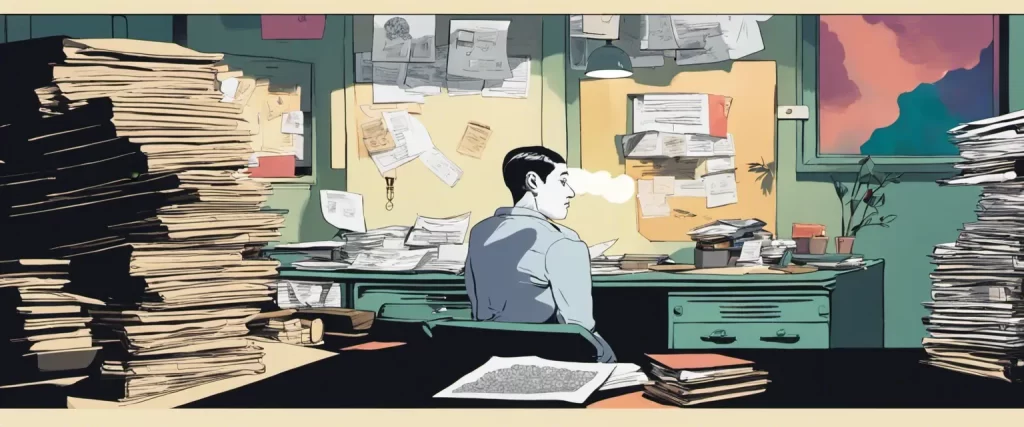——The Artist’s Way by Julia Cameron & On Writing Well by William Knowlton Zinnser
In the ever-evolving world of literature and creative pursuits, the need for thoughtful guidance and insightful wisdom has become paramount. As aspiring artists and writers seek to refine their craft, they often turn to renowned literary works that serve as their compasses, leading them towards creative fulfillment and mastery. Among these treasured guides, two books, Julia Cameron’s “The Artist’s Way” and William Knowlton Zinsser’s “On Writing Well,” stand as pillars of wisdom in their respective fields.
The Artist’s Way,” written by Julia Cameron, has become the holy grail for those seeking to overcome creative blocks and reclaim their artistic souls. Published in 1992, this revolutionary book presents a self-help approach to nurturing creativity and self-discovery through journaling, exercises, and other practices designed to unlock the reader’s creative potential. Cameron’s work has not only inspired countless individuals to reconnect with their artistic spirits but has also become a foundation for creative recovery programs around the world.
On the other hand, William Knowlton Zinsser’s “On Writing Well” stands as a timeless masterpiece in the realm of nonfiction writing. First published in 1976, this acclaimed guidebook has proved instrumental in shaping aspiring writers at all levels. Zinsser explores the art of crafting clear and concise prose while emphasizing the significance of maintaining a distinct voice. Through practical examples and meticulous analysis, Zinsser’s work has revolutionized the approach to nonfiction writing, leaving an indelible mark on the literary world.
Although the scope of “The Artist’s Way” and “On Writing Well” may appear distinct at first glance, upon close examination, similarities emerge between the two books. Both Cameron and Zinsser explore the intricacies of creativity and the craft of writing, offering invaluable advice to those who seek to improve their artistic or literary skills. Furthermore, their works delve into the notion that creative expression is as much about self-discovery and personal growth as it is about technical proficiency.
By conducting a comparative study of these two influential works, this research aims to shed light on the underlying principles that bind them together, uncovering the universal lessons on creativity that transcend their diverse themes. Additionally, this study will evaluate the significance of both works in shaping the contemporary landscape of artistry and writing, highlighting the enduring impact they have had on aspiring individuals.
Through an examination of their distinct approaches, comprehensive exercises, and overarching philosophies, this comparative study seeks to elucidate the indelible contributions these two books have made to the creative and literary spheres. By acknowledging their shared principles and exploring their unique perspectives, this research endeavors to equip readers with a deeper understanding of the creative process and writing precision.
In conclusion, “The Artist’s Way” and “On Writing Well” have forever transformed the creative landscape by providing essential guidance and inspiration to aspiring artists and writers. By embarking on this comparative journey, we aim to uncover the threads that intertwine these works, ultimately enhancing our comprehension of the artistic journey and the craft of writing.
Brief Summary of Two Books
The Artist’s Way by Julia Cameron
The Artist’s Way” by Julia Cameron is a self-help book aimed at helping individuals discover and unleash their creativity. The book presents a 12-week program that guides readers through various exercises and practices to unblock their artistic potential, overcome creative obstacles, and ignite their artistic inspiration.
Cameron introduces the concept of “Morning Pages,” where readers are encouraged to write three pages of stream-of-consciousness writing every morning to clear their minds and tap into their creative energy. The book also emphasizes the importance of regular artistic endeavors, encouraging readers to engage in “Artist Dates,” solo activities that nourish and rejuvenate their creative spirit. Novelist as a Profession by Haruki Murakami is also a good book.
Throughout the book, Cameron discusses common barriers to creativity such as self-doubt, perfectionism, and fear of judgment, and offers techniques to overcome these obstacles. She also explores the impact of negative influences and past traumas on artistic expression and provides strategies for healing and self-discovery.
“The Artist’s Way” incorporates spiritual elements, suggesting that creativity is a divine and universal force that connects individuals to higher powers. The book encourages readers to practice faith in their creative capabilities and suggests the use of affirmations and visualization techniques to manifest artistic successes.
By the end of the 12-week program, readers are expected to have developed a renewed sense of creativity, confidence, and purpose. “The Artist’s Way” offers a comprehensive framework for individuals to rediscover their innate artistic abilities, transform their creative lives, and embrace a more creative mindset.
On Writing Well by William Knowlton Zinnser
“On Writing Well” by William Knowlton Zinnser is a renowned guide to improving one’s writing skills. The book emphasizes the importance of simplicity, clarity, and brevity in writing while providing practical advice and examples for various types of nonfiction writing, from journalism to memoirs.
Zinnser begins by stressing the significance of self-confidence and authenticity in writing, urging writers to trust their own voice and ideas. He then delves into the core principles of good writing, including the need to write with simplicity, avoiding unnecessary jargon or complex language that may alienate readers. The author emphasizes the importance of clarity and precision, encouraging writers to be mindful of their choice of words and sentence structure, ensuring that their message is conveyed effectively.
Moreover, Zinnser delves into the art of rewriting, explaining how revision and editing are essential stages in the writing process. He provides valuable insights on cutting unnecessary words and phrases, restructuring sentences, and polishing one’s work to achieve conciseness and cohesion.
Throughout the book, Zinnser uses multiple examples from well-known authors to illustrate his concepts and techniques, including lengthy passages where he dissects the writing to reveal its strengths and weaknesses.
Additionally, the author offers guidance on various types of nonfiction writing, such as writing about people, places, science, and art. He explores the nuances and challenges of each subject matter, providing tips to make the writing engaging and accessible to readers.
Moreover, Zinnser doesn’t shy away from addressing potential roadblocks and excuses that hinder writers. He encourages them to overcome self-doubt, fear of rejection, and the desire for perfection, advocating for persistence and discipline as the keys to improvement.
Overall, “On Writing Well” is a comprehensive guide that equips writers with essential tools to enhance their craft. Zinnser’s emphasis on simplicity, clarity, and authenticity, combined with his practical examples and advice, make it a valuable resource for both aspiring and experienced writers aiming to refine their writing skills.
Comparison between Two Books

Similarities in Writing & Creativity
There are several similarities between “The Artist’s Way” by Julia Cameron and “On Writing Well” by William Knowlton Zinsser when it comes to writing and creativity. Both books explore the process of creative expression, aiming to provide guidance and insights to aspiring writers. Here are some of the key similarities:
1. Emphasis on Practice: Both books highlight the importance of consistent practice and discipline in writing. Cameron and Zinsser stress that creativity is not a one-time event but a continuous process that requires regular engagement and dedication.
2. Overcoming Resistance: Both authors discuss the concept of resistance, which can hinder creativity. Cameron refers to it as “the inner critic” or “creative blocks,” while Zinsser calls it “the writer’s block.” They encourage writers to identify and overcome these barriers to allow their creative juices to flow freely.
3. Developing a Writing Ritual: Cameron and Zinsser advocate for the establishment of a daily writing routine. Whether it is through morning pages (as suggested by Cameron) or setting aside specific writing time (as recommended by Zinsser), both authors believe in creating a regular practice that allows writers to tap into their creativity consistently.
4. Self-Reflection and Personal Growth: Both books delve into the idea that writing and creativity can lead to personal growth and self-discovery. Cameron encourages writers to explore their innermost thoughts and feelings through various exercises, while Zinsser emphasizes the importance of developing a unique voice and style.
5. Dealing with Criticism and Rejection: Both Cameron and Zinsser acknowledge that writers often face criticism and rejection. They offer insights and strategies for handling these challenges, encouraging resilience and the ability to learn from feedback.
6. Balancing Structure and Freedom: Both authors advocate for finding a balance between structure and freedom in the creative process. While Zinsser emphasizes the importance of clarity and simplicity in writing, Cameron encourages writers to embrace a sense of freedom and playfulness to nurture their creativity.
Overall, both “The Artist’s Way” and “On Writing Well” recognize the importance of a dedicated practice, overcoming obstacles, self-reflection, resilience, and striking a balance between structure and freedom in the pursuit of creative writing. These books provide valuable insights and practical tools that can help writers enhance their craft and unlock their creative potential.
Divergences in Writing & Creativity
The Artist’s Way by Julia Cameron and On Writing Well by William Knowlton Zinsser are both highly influential books in the realm of writing and creativity. While they approach the subject matter from different angles, focusing on creativity and writing respectively, they share a common goal of inspiring and helping aspiring writers achieve their best work. However, there are significant divergences in their approaches, which can be seen in their emphasis on different aspects of the writing process and their perspectives on creativity.
The Artist’s Way primarily focuses on the development of creativity and the recovery of artistic inspiration. Julia Cameron presents a twelve-week program that aims to unblock the artist within by exploring one’s creative potential. The book heavily emphasizes the use of tools such as morning pages (daily stream-of-consciousness writing) and artist dates (solo outings to engage with one’s interests). Cameron employs a more introspective and self-reflective approach, encouraging readers to delve into their personal lives, childhood memories, and spiritual connections as a means to uncover their creative blocks and nurture their imaginative abilities.
On the other hand, On Writing Well specifically addresses the craft of writing. Zinsser provides practical advice on how to improve one’s writing skills, focusing on clarity, simplicity, and effective communication. The book covers various forms of non-fiction writing, such as journalism, memoirs, and business writing, but its fundamental principles can be applied across different genres. Zinsser stresses the importance of revising and editing one’s work, encouraging writers to continuously improve their style, grammar, and overall clarity. He emphasizes the need to connect with readers and ensure that they understand and engage with the content.
In terms of their perspectives on creativity, The Artist’s Way views creativity as a spiritual force that needs to be nurtured and unblocked, while On Writing Well approaches creativity as a skill that can be honed through practice and technique. Cameron focuses on the individual’s journey towards self-discovery and artistic expression, while Zinsser emphasizes the importance of mastering the technical aspects of writing to effectively convey ideas and engage readers.
Another notable divergence is the intended audience of these books. The Artist’s Way is primarily oriented towards artists, aspiring writers, and individuals seeking to develop their creative potential, while On Writing Well caters more to writers of all levels who want to enhance their craft, regardless of their artistic inclinations.
In conclusion, while both The Artist’s Way and On Writing Well share a common objective of aiding writers in their creative pursuits, they diverge in their approaches. The Artist’s Way focuses on exploring creativity and unblocking artistic inspiration, whereas On Writing Well provides practical advice for honing writing skills and effectively communicating ideas. Each book caters to a different aspect of the writing process, offering valuable insights and guidance to different types of writers.

Conclusion
Both “The Artist’s Way” by Julia Cameron and “On Writing Well” by William Knowlton Zinnser are highly regarded books in their respective fields. Choosing between them ultimately depends on your personal interests and goals.
“The Artist’s Way” is a book focused on creativity and the artistic process. It offers practical techniques and exercises to help readers overcome creative blocks, enhance their self-expression, and find their artistic voice. If you are interested in exploring or expanding your creativity, whether you are an artist, writer, or simply looking to tap into your innate creative potential, “The Artist’s Way” could be a valuable read.
“On Writing Well,” on the other hand, is a renowned book for aspiring writers and individuals looking to improve their writing skills. Zinnser provides guidance on various aspects of writing, such as clarity, simplicity, and organization. It covers a wide range of writing styles and genres, making it applicable to both professional and non-professional writers. If your primary interest lies in honing your writing abilities and communicating effectively through the written word, “On Writing Well” would be an excellent choice.
In the end, the decision depends on your specific interests and goals. If you are more inclined towards exploring and enhancing your creativity, “The Artist’s Way” would be more worthy of reading. On the other hand, if you are primarily focused on improving your writing skills, “On Writing Well” would be the more suitable option.



